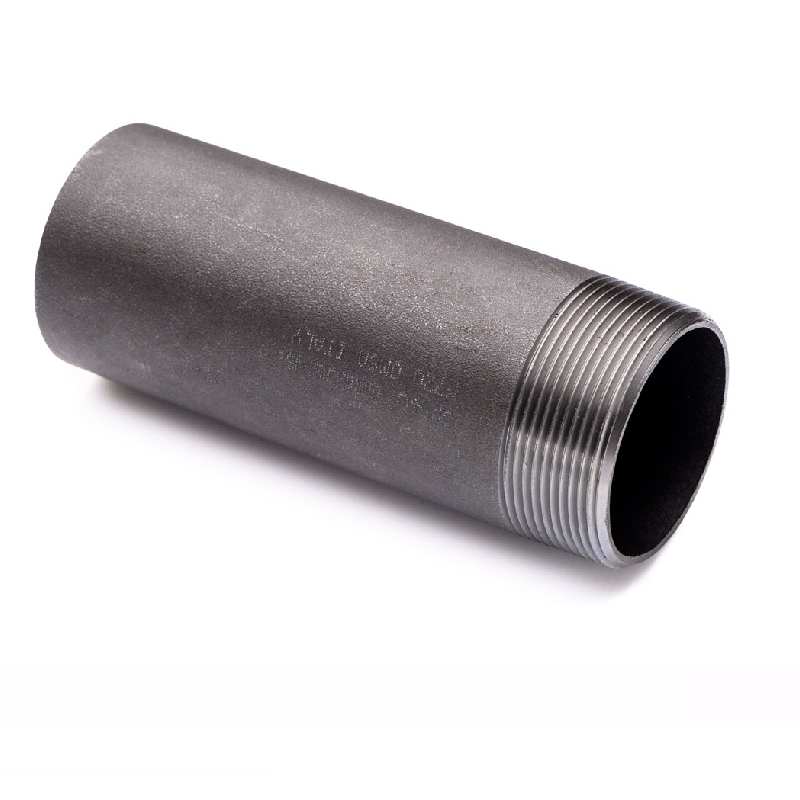-
Cangzhou Yulong Steel Co., Ltd.
-
Phone:
+86 13303177267 -
Email:
admin@ylsteelfittings.com
- English
- Arabic
- Italian
- Spanish
- Portuguese
- German
- kazakh
- Persian
- Greek
- French
- Russian
- Polish
- Thai
- Indonesian
- Vietnamese
- Zulu
- Korean
- Uzbek
- Hindi
- Serbian
- Malay
- Ukrainian
- Gujarati
- Haitian Creole
- hausa
- hawaiian
- Hebrew
- Miao
- Hungarian
- Icelandic
- igbo
- irish
- Japanese
- Javanese
- Kannada
- Khmer
- Rwandese
- Afrikaans
- Albanian
- Amharic
- Armenian
- Azerbaijani
- Basque
- Belarusian
- Bengali
- Bosnian
- Bulgarian
- Catalan
- Cebuano
- China
- China (Taiwan)
- Corsican
- Croatian
- Czech
- Danish
- Esperanto
- Estonian
- Finnish
- Frisian
- Galician
- Georgian
- Kurdish
- Kyrgyz
- Lao
- Latin
- Latvian
- Lithuanian
- Luxembourgish
- Macedonian
- Malgashi
- Malayalam
- Maltese
- Maori
- Marathi
- Mongolian
- Myanmar
- Nepali
- Norwegian
- Norwegian
- Occitan
- Pashto
- Dutch
- Punjabi
- Romanian
- Samoan
- Scottish Gaelic
- Sesotho
- Shona
- Sindhi
- Sinhala
- Slovak
- Slovenian
- Somali
- Sundanese
- Swahili
- Swedish
- Tagalog
- Tajik
- Tamil
- Tatar
- Telugu
- Turkish
- Turkmen
- Urdu
- Uighur
- Welsh
- Bantu
- Yiddish
- Yoruba

Dec . 05, 2024 14:12 Back to list
pipe socket weld
Understanding Pipe Socket Welds An In-depth Exploration
Pipe socket welds are a critical connection method in piping systems, especially in industries that require robust, leak-proof joints, such as oil and gas, chemical processing, and power generation. This article aims to provide a comprehensive overview of pipe socket welds, their applications, advantages, disadvantages, and best practices.
What is a Pipe Socket Weld?
A socket weld is a type of fitting where a pipe is inserted into a recessed area, or socket, of another pipe or fitting. The connection is then welded around the circumference of the joint. This method is favored for its ability to create strong and airtight seals, which is essential in high-pressure applications.
Applications of Socket Welds
Socket welds are predominantly used in high-pressure and high-temperature environments, making them suitable for various industries. Common applications include
1. Oil and Gas Industry Socket welds are widely used in pipelines for transporting crude oil and natural gas due to their strength and reliability. 2. Chemical Processing In chemical plants, where corrosive substances are handled, socket welds provide a durable connection that minimizes the risk of leaks. 3. Power Generation Power plants often employ socket welds in their piping systems to ensure the safe transfer of steam and other fluids under high pressure.
Advantages of Pipe Socket Welds
1. Strength and Durability Socket welds offer superior strength compared to threaded connections or mechanical joints. The complete fusion of the weld provides a stronger overall structure. 2. Leak-Proof Sealing Because of the continuous weld around the pipe's circumference, socket welds create a reliable, leak-proof seal, which is crucial in preventing fluid escapes in high-pressure applications.
3. Ease of Installation The installation of socket welds is relatively straightforward. Once the pipe is fitted into the socket, it simply requires welding, which can be performed quickly, thereby saving time and labor costs.
Disadvantages of Pipe Socket Welds
pipe socket weld

Despite their numerous advantages, pipe socket welds also have drawbacks
1. Heat Affected Zone The area around the weld may undergo changes in physical properties due to the heat from the welding process. This can lead to potential weaknesses if not managed correctly.
2. Limited Size Capabilities Socket welds are generally limited to smaller piping systems (typically up to 2 inches in diameter). For larger pipes, alternative welding methods such as butt welds are preferred.
3. Cost of Priming Depending on the materials used, the preparation and priming required before welding can add to project costs, which could be problematic for budget-sensitive projects.
Best Practices for Socket Welding
For successful installation and longevity of socket welds, the following best practices are recommended
1. Material Compatibility Ensure that the materials being welded are compatible to prevent issues such as galvanic corrosion, which can weaken joints.
2. Proper Preparation Clean and prepare the surfaces before welding. This includes removing any rust, oil, or other contaminants to promote optimal welding conditions.
3. Correct Welding Technique Use the appropriate welding parameters to avoid overheating, which can cause deformation or excessive hardening of the weld.
4. Inspection Conduct thorough inspections after welding to identify any defects such as cracks or incomplete fusion, ensuring the integrity of the weld.
Conclusion
Pipe socket welds play a crucial role in the integrity and performance of piping systems across various industries. Their strength, leak-proof characteristics, and ease of installation make them a preferred choice for many applications. However, careful consideration of their limitations alongside best practices for installation is essential to maximize their benefits and ensure long-term operational reliability. Whether being used in high-pressure outlets or complex chemical processes, understanding the nuances of socket welds can significantly enhance the effectiveness of engineering solutions.
Latest news
-
ANSI 150P SS304 SO FLANGE
NewsFeb.14,2025
-
ASTM A333GR6 STEEL PIPE
NewsJan.20,2025
-
ANSI B16.5 WELDING NECK FLANGE
NewsJan.15,2026
-
ANSI B16.5 SLIP-ON FLANGE
NewsApr.19,2024
-
SABS 1123 FLANGE
NewsJan.15,2025
-
DIN86044 PLATE FLANGE
NewsApr.19,2024
-
DIN2527 BLIND FLANGE
NewsApr.12,2024
-
JIS B2311 Butt-Welding Fittings LR/SR 45°/90° /180°Seamless/Weld
NewsApr.23,2024











